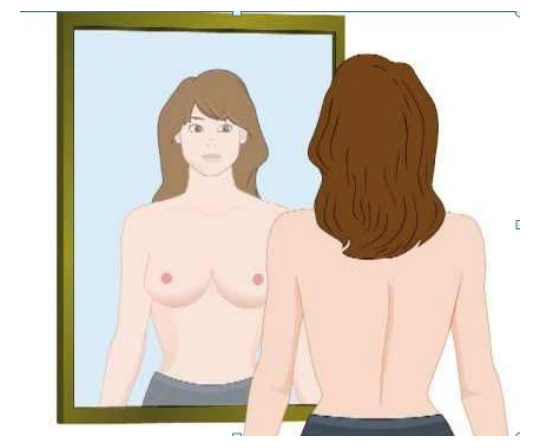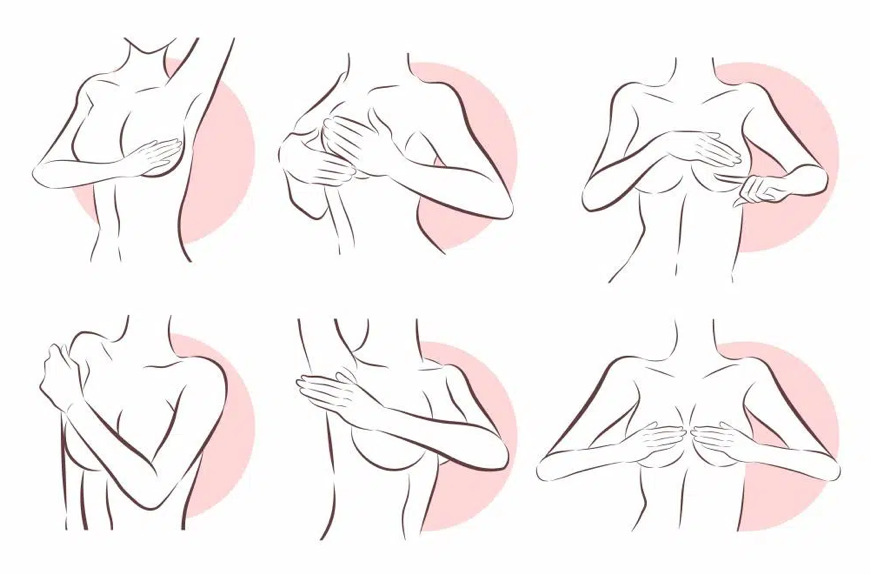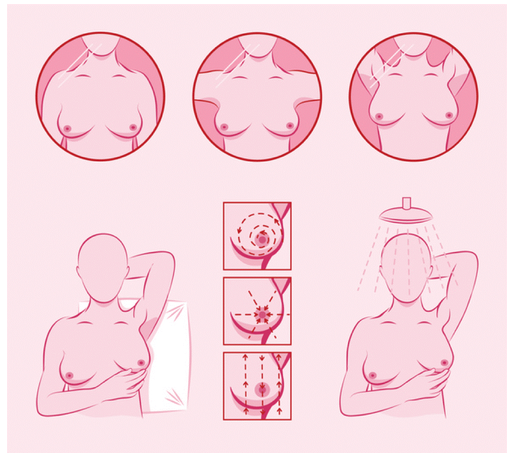Breast Self- assessment
Breast self-examination (BSE)
Breast self-examination (BSE) is a convenient method of early diagnosis in which a woman can see and touch her breasts and identify abnormalities. Although BSE is not recommended for breast cancer screening, it is important to become familiar with how the breasts look and feel. Self-examination will help you notice changes in the breast and know what is normal for you and what is abnormal.
Diagnosing breast cancer in the early stages not only increases the chances of treatment, but also prevents its psychological, family and social complications.
What is breast self-examination?
Breast self-examination is the examination of the breast by the person himself. This examination is applicable to any woman and any age. Breast self-examination has no economic cost and only 10-15 minutes of time is required to perform it every month. With the monthly breast examination, you will be aware of the characteristics of your breast and if any changes occur in the early stages, you will be able to recognize them. However, this type of examination cannot replace a clinical examination by a doctor or mammography, but it protects the person during medical visits.
Therefore, Regular examinations by a doctor at intervals of 6-12 months and mammography according to the doctor's opinion should be done along with breast self-examination.
Breast self-examination time
Self-examination should be done every month on a certain date and in a certain way. The best time to perform the examination is 2-3 days after the end of the menstrual period, in other words, around the ninth or tenth day from the beginning of the menstrual period. At this time, the breasts have the least sensitivity and heaviness, so the examination will be easier and the result will be more accurate.
If you do not have your menstrual cycle for any reason, do a breast self-examination on a specific day every month, for example, the first day of the month. In lactating women, it is better to perform the examination after breastfeeding the baby and emptying the milk from the breast.
How to perform breast self-examination

Breast self-examination consists of two steps:
- Observation
- Touching (examination of the breast by the person himself)
Observation: In some cases, breast diseases, especially breast cancers, cause changes in the appearance of the breast that can be recognized by looking at the breasts. Therefore, it is necessary to be familiar with the appearance of your breasts so that you can recognize any possible changes in them.
Observation consists of 4 steps:

- Place the hands on both sides of the body in a hanging position and look at the breast.
- Raise your hands straight up by the side of your head.
- Bend the hands from the elbows and press on the waist (put the hands on the waist and press).
- Stretch your arms straight forward and bend slightly forward.
In each of the above positions, look at the breast carefully. Any changes including changes in appearance, asymmetry of the breasts, redness or sores of the breast, scaling of the nipple, bloody or bloody secretions, Deviation of the nipples, bulge in a part of the breast or protrusion of vessels in a part of the breast, indentation of the skin or nipple are important and should be investigated.
Touching: To properly examine the breasts when touching, it is better to use the end of the last joint of the 3 middle fingers of the hands (not the tips of the fingers). This part is more sensitive to touch than other parts. Never squeeze the breast between your fingers because you will falsely feel the presence of a lump.
What areas should be examined?

The area between the clavicle from above, sternum bone and armpit from the sides and two fingers below the lower edge of the breast, in the area of the underwear strap from below, should be examined.
It is better to lie down to touch the breast. In the lying position, to examine the right breast, place a small pillow under the left shoulder and the left hand under the head. Your shoulder should be raised so that the left breast is in the middle of the chest and does not deviate to any side. Always use the left hand to examine the right breast and always use the right hand to examine the left breast.
Touch the whole breast with short circular movements. To touch, rotate your fingers on the chest with low, medium and high pressure to perform superficial and deep touch in each area.
In order to examine everywhere in the breast, it is better to examine the whole breast in concentric circles from the periphery to the tip separately.
After you have examined the entire breast, check the breast trail in the armpit and then the armpit for a breast or axillary lump. Then touch the opposite breast in the same way.
You can do the breast examination while taking a bath. In this case, the skin of the breast is slippery and the examination of the breasts is easier. If your breasts are small, with this method, first put one hand on your head and touch that side with the opposite hand of the breast. If your breasts are large, it is better to hold the breast with one hand and examine it with the other hand.
At the end of the examination, give a slight pressure to the nipple as in milking mode to find if there is a discharge.
After a complete breast examination, be sure to see a doctor if you have any of the following:
- Touching the lump in the breast
- Increasing the size of a mass that was existed before
- Skin symptoms such as indentation of the skin or nipple, deviation of the nipple, redness, sores, etc.
- Flaking, redness and itching of the nipple
- Abnormal nipple discharge
To get more information on nutrition, you can visit the Clinics of Motamed Cancer Institute ACECR or contact the numbers below.
Consultant contact number: 021-66404020 / 09124885127
Compiled, written and translated by:
Dr. Ahmad Fazilat
Faculty member, Dept of Genetics, Motamed Cancer Institute, ACECR


